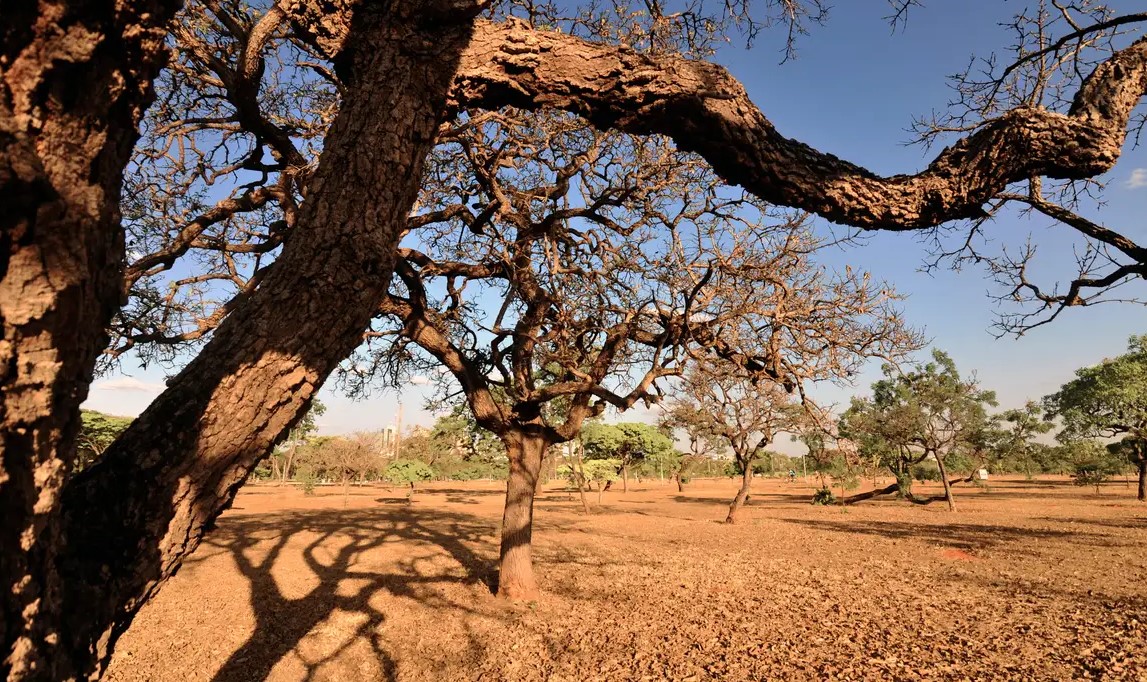


Another consequence highlighted in the article is the decrease in carbon sequestration (photo: archive/Agência Brasil)
Published on 10/09/2024
Agência FAPESP* – A study published in the journal Applied Soil Ecology analyzed the impact of desertification in the Caatinga, the semi-arid shrubland and thorn forest biome in Brazil’s Northeast region, and found that degradation reduces soil functionality by more than 50%, reducing its ability to support plant growth and promote human and animal well-being. Another consequence highlighted in the article is the decrease in carbon sequestration.
The research was conducted by scientists from the Federal University of Ceará (UFC) and the Research Center for Greenhouse Gas Innovation (RCGI) of the University of São Paulo (USP).
They analyzed 54 soil samples taken during the dry and rainy seasons in three different areas of the Irauçuba desertification zone in the northern part of Ceará state, each with areas of native, degraded and restored vegetation.
The reduction of more than 50% in soil functionality was calculated by means of various physical, biological and chemical analyses in areas degraded by human activity. From a physical point of view, the soil was very compromised, mainly due to compaction caused by animal trampling.
“This phenomenon reduces porosity, preventing water infiltration, and ultimately accelerates the soil erosion process,” explains Antonio Yan Viana Lima, a Ph.D. student at USP’s Luiz de Queiroz College of Agriculture (ESALQ), RCGI researcher and first author of the paper.
“From a biological point of view, the indicators of microbial composition, carbon content and enzymatic activity proved to be favorable for vegetation growth and carbon sequestration,” says Lima. “But we saw little variation in the chemical indicators between the areas studied, including between restored and degraded areas. This shows that biological components are important indicators of soil health because they respond rapidly to human disturbance,” he adds.
“In the restored areas, we found that by preventing human activity, it was possible to achieve physical, chemical and biological indices close to their original composition,” says Arthur Pereira, professor at UFC and coordinator of the study.
The restored areas, he says, are fields that were completely fenced off more than two decades ago in order to prevent human activity and animal movement. No species were planted in these fields because the goal was to see how and if the vegetation would regenerate naturally without this interference.
“The interesting thing is that the results of the analysis in these areas, in all aspects, were very close to what was seen in the areas with native vegetation. So, over the course of two decades, it’s been possible to restore the health of the soil, which could also be promising for carbon sequestration, since these areas had higher levels of total and microbial carbon stocks,” says Pereira.
Methodology
The study used the Soil Management Assessment Framework (SMAF) tool in the semi-arid region. This tool, used to assess soil health, is based on calculations performed by algorithms that place the results of the factors analyzed on a scale of 0 to 100, with 100 being the most positive. This results in a final number corresponding to a soil health index.
The research group is now extending the analysis to the three other desertification zones in the semi-arid region, with the help of the SMAF, to see if the situation observed in Irauçuba is representative of the entire Caatinga and if there are other techniques for restoring degraded soils.
These new endeavors are being developed as part of the Caatinga Microbiome Initiative (CMI) project, an inter-institutional initiative created in 2022 that involves more than 20 professors and researchers from Brazil and abroad to study the microbiome of the Caatinga and its relationship with soil health.
The research is part of several projects in the Nature Based Solution program of the RCGI, an Engineering Research Center (ERC) set up by FAPESP and Shell with the support of several companies. Among the center’s initiatives is Project 53, which develops integrated agricultural systems, a strategy for producing a variety of crops in the same area while respecting the seasonality of each crop.
The article “Grazing exclusion restores soil health in Brazilian drylands under desertification process” can be read at: www.sciencedirect.com/science/article/pii/S0929139323003050.
* With information from the RCGI.
Source: https://agencia.fapesp.br/52988